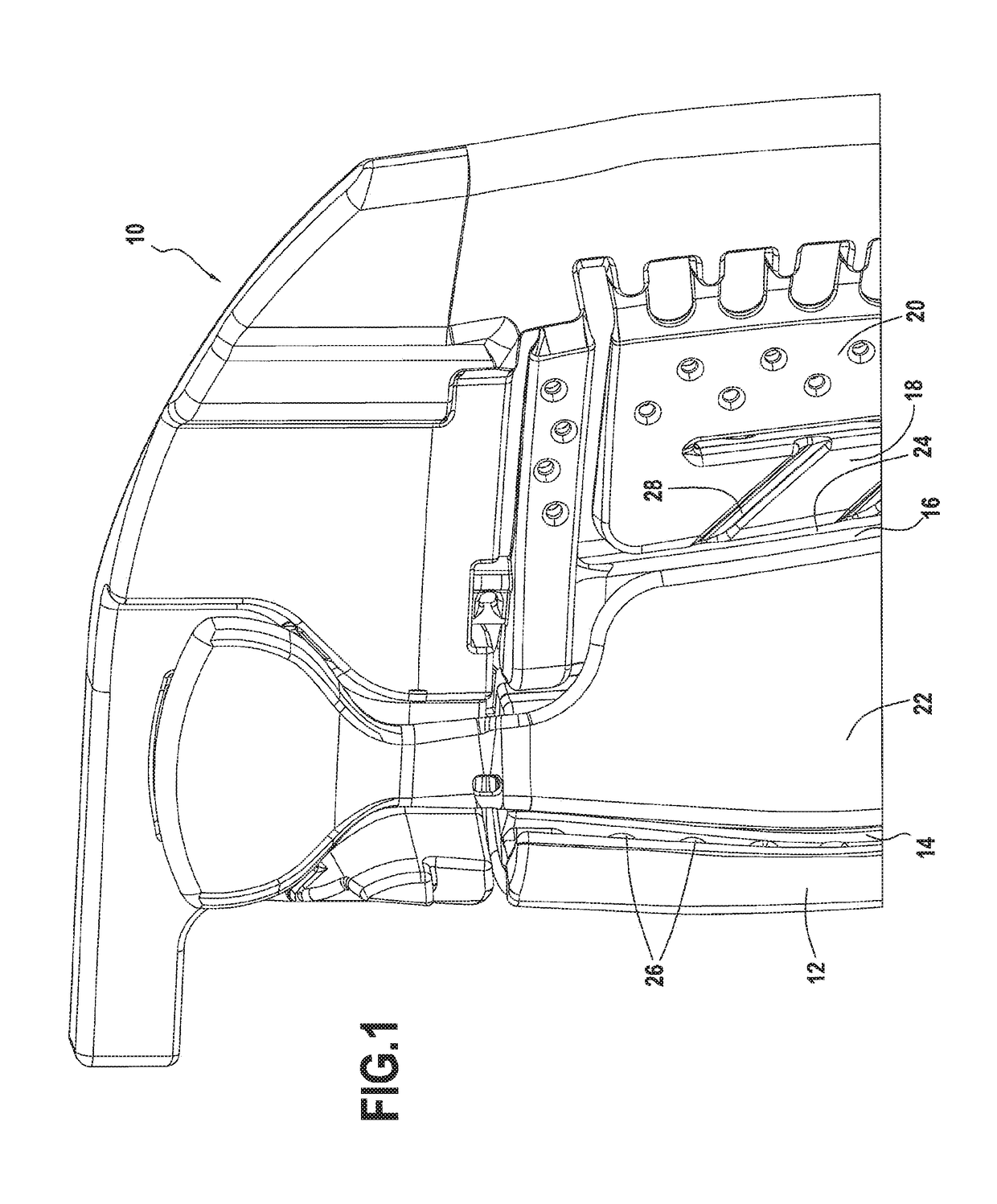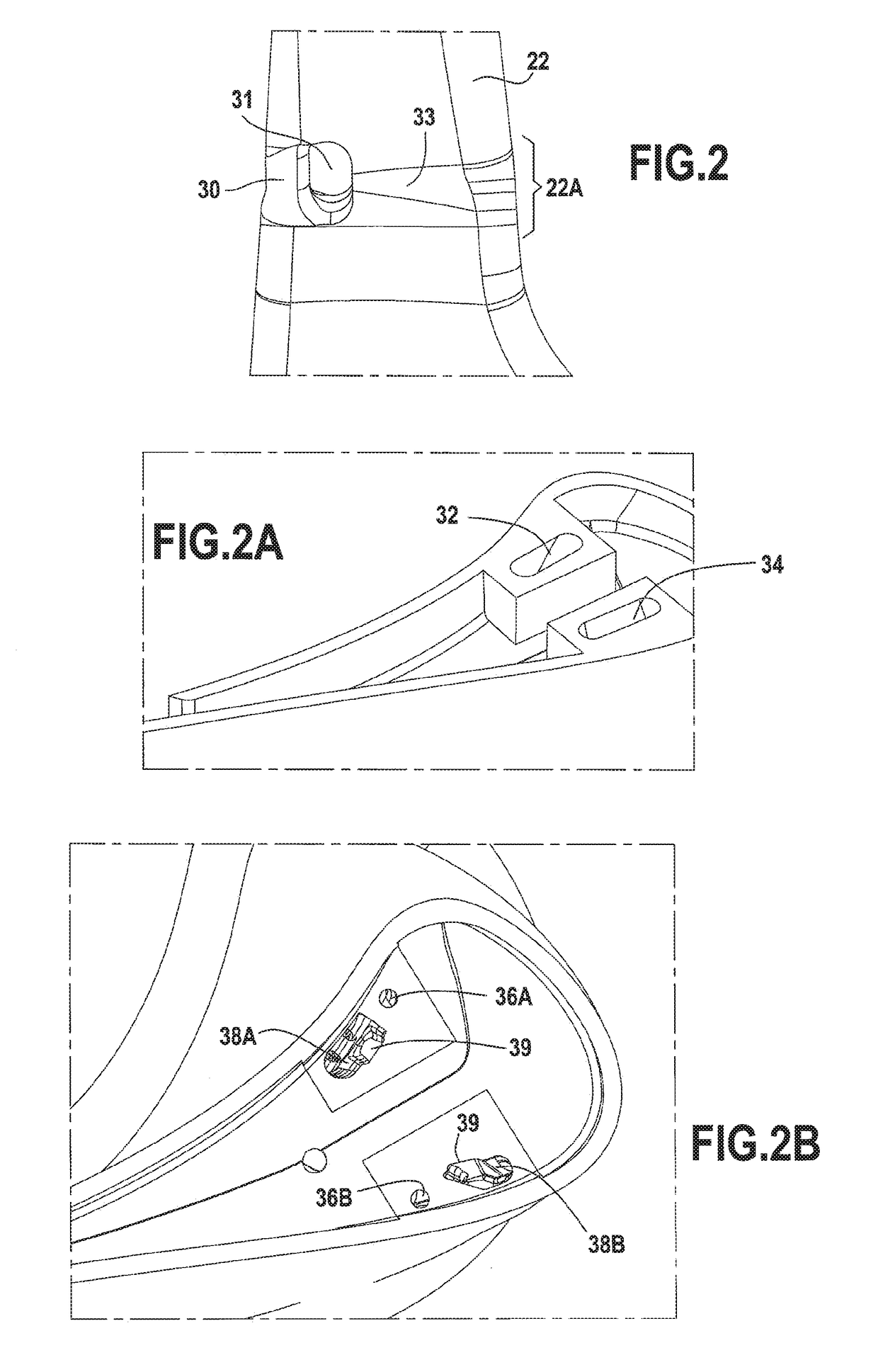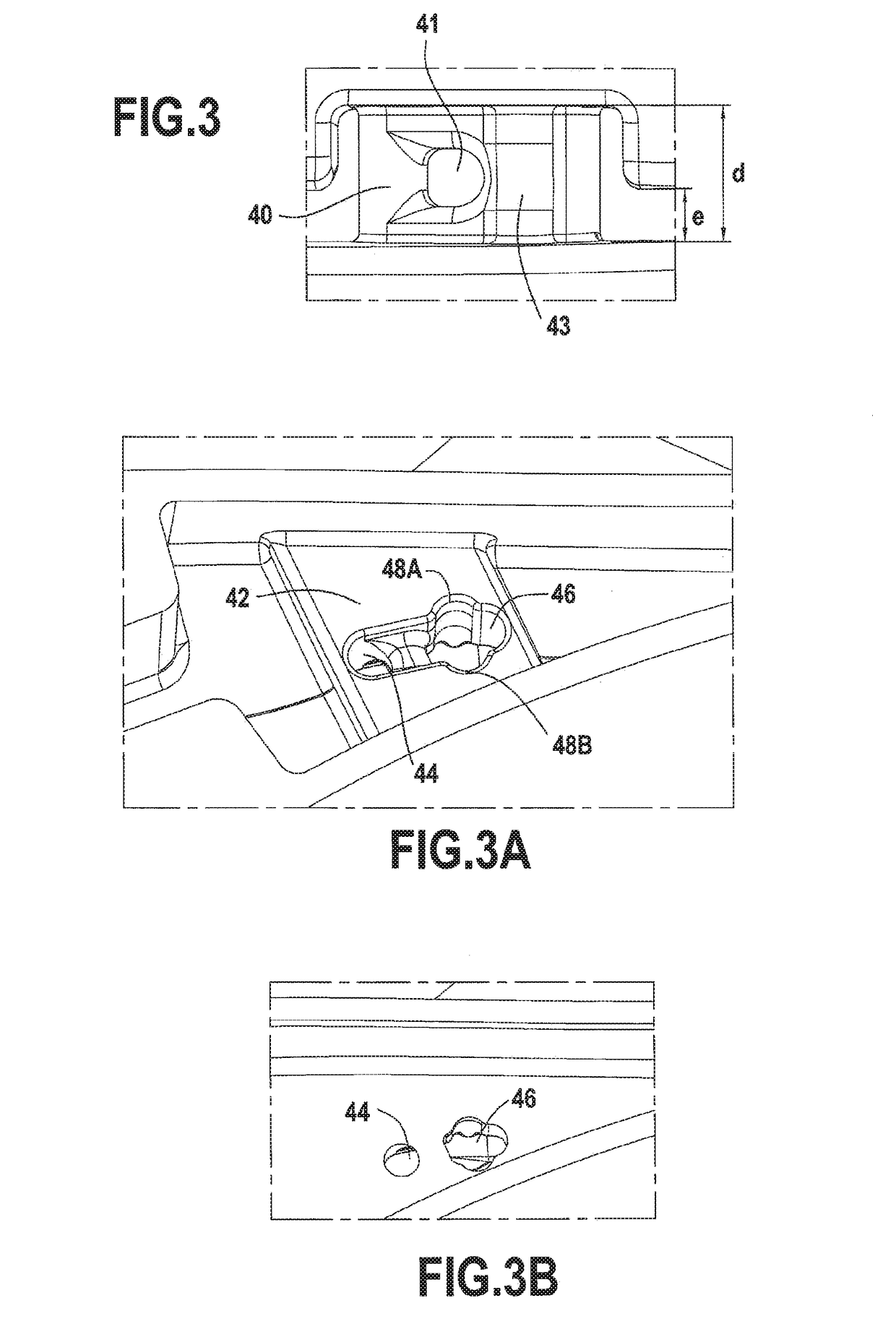A method of forming dust-removal holes for a turbine blade, and an associated ceramic core
- Summary
- Abstract
- Description
- Claims
- Application Information
AI Technical Summary
Benefits of technology
Problems solved by technology
Method used
Image
Examples
Embodiment Construction
[0019]FIG. 1 shows, the tip assembly of a ceramic core for use in making a hollow turbine blade of a turbine engine. In the example shown, the ceramic core 10 comprises seven portions or columns. The first column 12, which is to be located on the side where the combustion gas arrives, corresponds to a leading edge cavity that is to be created after casting, whereas the second column 14 corresponds to a central cavity that is adjacent thereto. This cavity receives a stream of cooling air via a channel that results, after casting, from the presence of a first column root of the core. Three other columns 16, 18, and 20 correspond to adjacent cavities that receive a second stream of cooling air via another channel coming from the presence of a second column root of the core. Finally, the core also has sixth and seventh columns 22 and 24 constituting side columns and corresponding to side cavities created after casting, being respectively spaced apart from the second and third columns 14...
PUM
 Login to View More
Login to View More Abstract
Description
Claims
Application Information
 Login to View More
Login to View More - R&D
- Intellectual Property
- Life Sciences
- Materials
- Tech Scout
- Unparalleled Data Quality
- Higher Quality Content
- 60% Fewer Hallucinations
Browse by: Latest US Patents, China's latest patents, Technical Efficacy Thesaurus, Application Domain, Technology Topic, Popular Technical Reports.
© 2025 PatSnap. All rights reserved.Legal|Privacy policy|Modern Slavery Act Transparency Statement|Sitemap|About US| Contact US: help@patsnap.com



